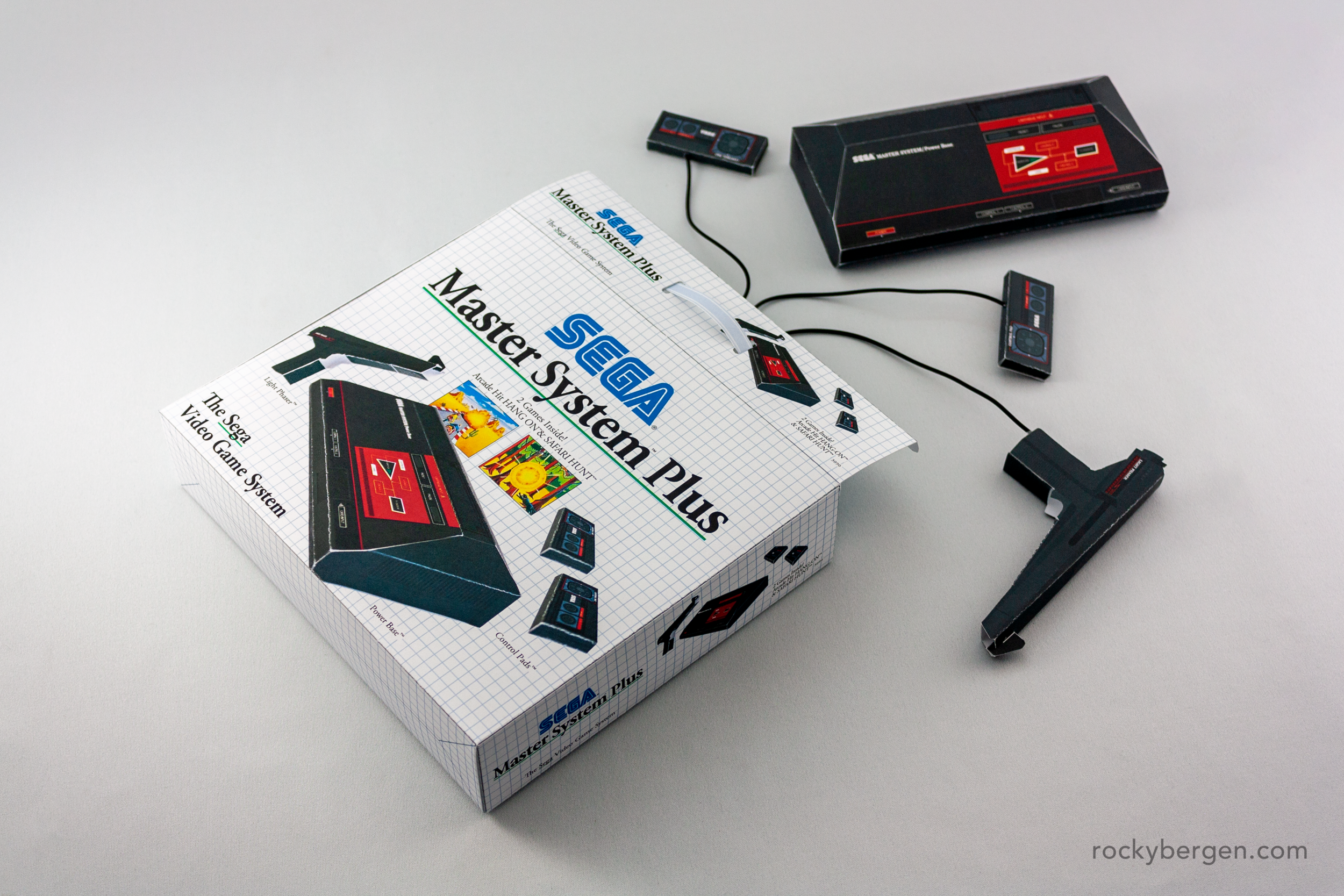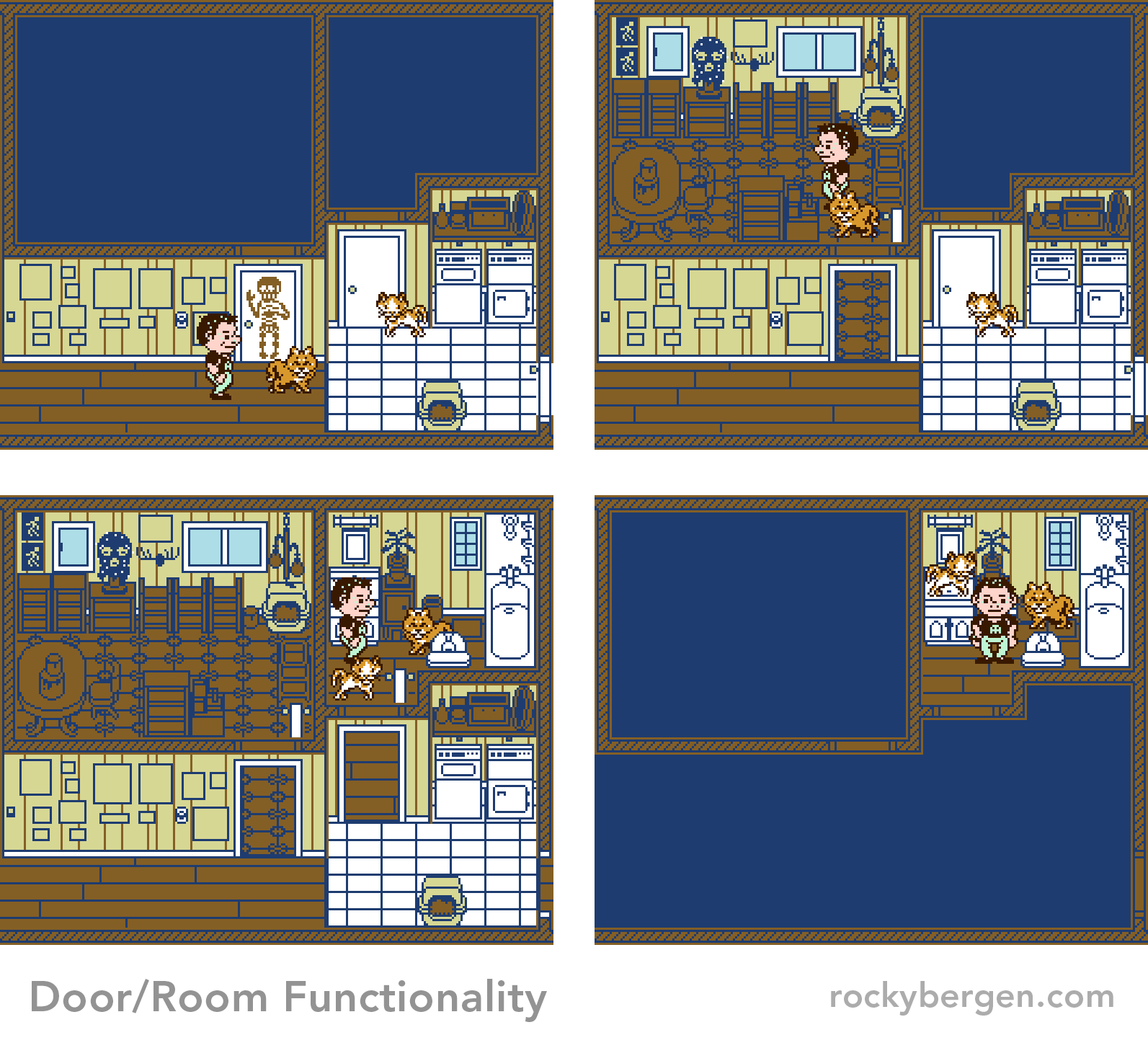The Sega Master System papercraft pattern can be downloaded at the end of this post.
I was probably 11 when I first saw the Sega Master System on display at our local Home Hardware store. It was the Christmas Holiday season and on display was the system kiosk running Hang-on. I had already seen the NES in action by then and I could tell the Master System's palette was more vibrant and featured more simultaneous on-screen colours. The controller felt a little less confident in my hands, but I went back to that display several times over the holidays so I could play the display title over and over. I knew that Safari Hunt must be superior to Duck Hunt due to the extended menu of exotic animals on offer. I landed up getting an NES that year and it wouldn't until my high school years that I would get another chance to play the Master System.
Safari Hunt
Hang On
Nintendo would go on to dominate the 8-bit era in North America so all my friends and I played and shared Nintendo games between ourselves. We mostly grew up Nintendo fanboys by default. Many years later while in high school I randomly discovered that one of my classmates had grown up owning a Master System and still played it. So I demanded that we head over to his place to check it out. I must have played Fantasy Zone for several hours that night.
Oh my, what could be inside?
It’s a Sega Master System!
So this is what a SMS Christmas feels like.
It wasn't until I was in my late 30's that I decided to buy a Master System and grab a few games to try it out myself. If Sega had marketed and distributed their 8-bit product more aggressively it may have performed better because many of the games are pretty amazing and the experience in very qualitatively unique from many of Nintendo's offerings at the time. This was the system of choice to many of the European and South American consumers.
Box is included with this pattern!
Rear of Box
Remember when systems came with TWO controllers.
I would be lying if I said I would have preferred growing up with the Master System, but that may have been mostly due to my community of friends sharing and talking about Nintendo games all day. I don't know what it would have been like being a silent Master System fan in the group. Maybe if on that fateful Christmas my parents had bought me a Sega Master System instead of an Nintendo Entertainment System I would have fallen in love with Alex Kidd and Phantasy Star, I know that as an adult I have.
Alex Kidd was one of Sega’s early mascot attempts, second to Opa Opa.
Sometimes I have little connection to the model I am designing and other times it part of a lifelong fascination. Whether it is something close to my heart or something “new” and exciting I am always happy to explore a different design language and share this experience with others in this unique way.
Happy holidays to everyone and if you like this article please consider sharing with a friend or leaving a comment! What should I design next?
The Sega Master System papercraft model can be downloaded here.






